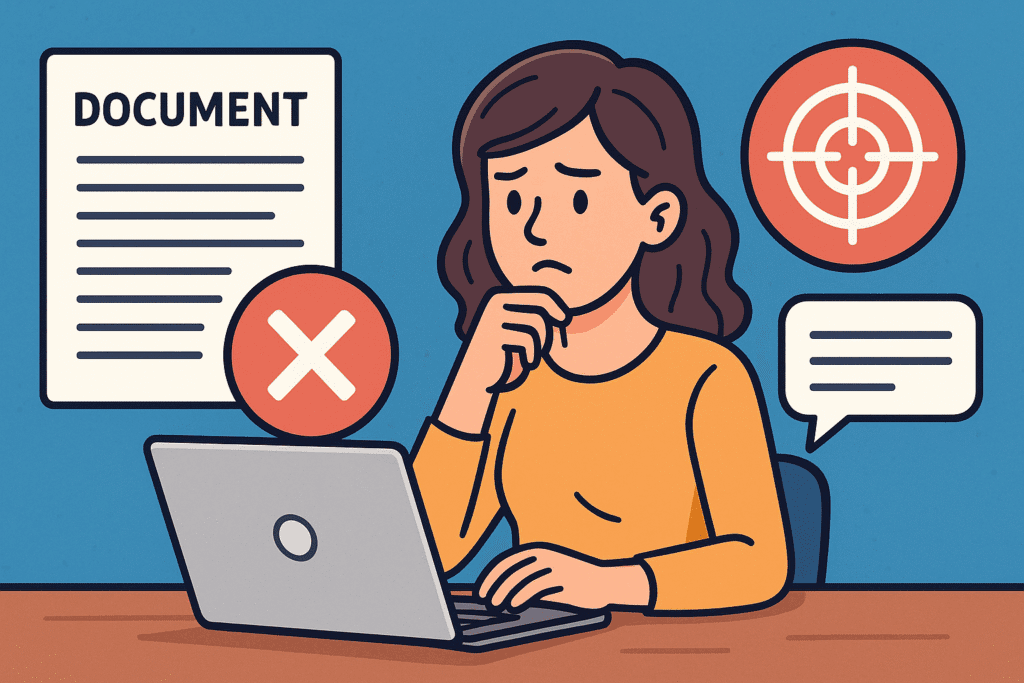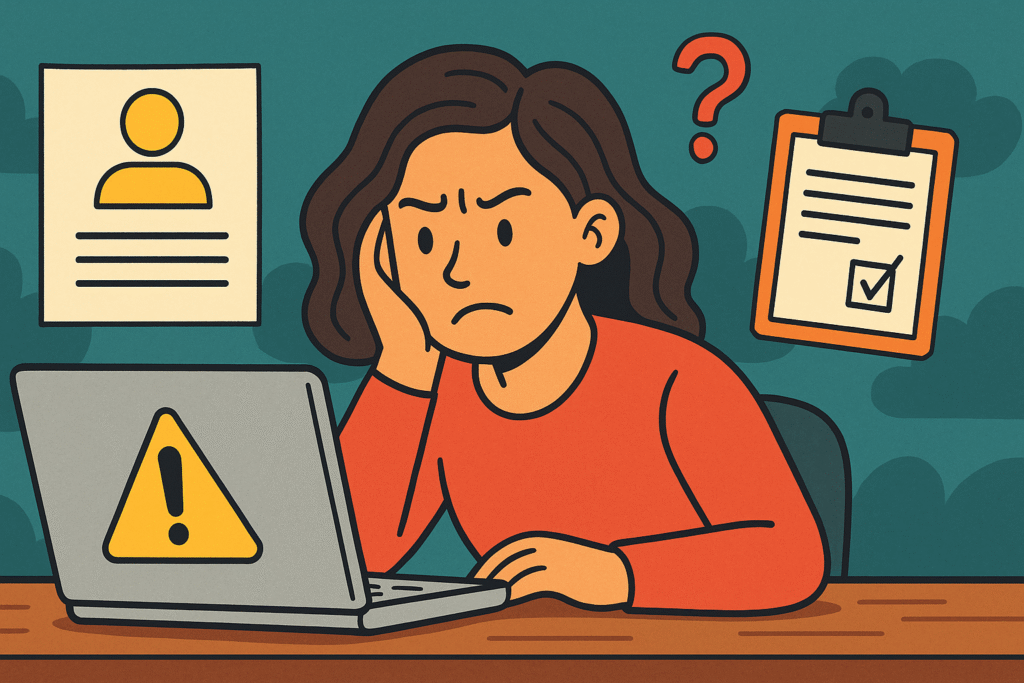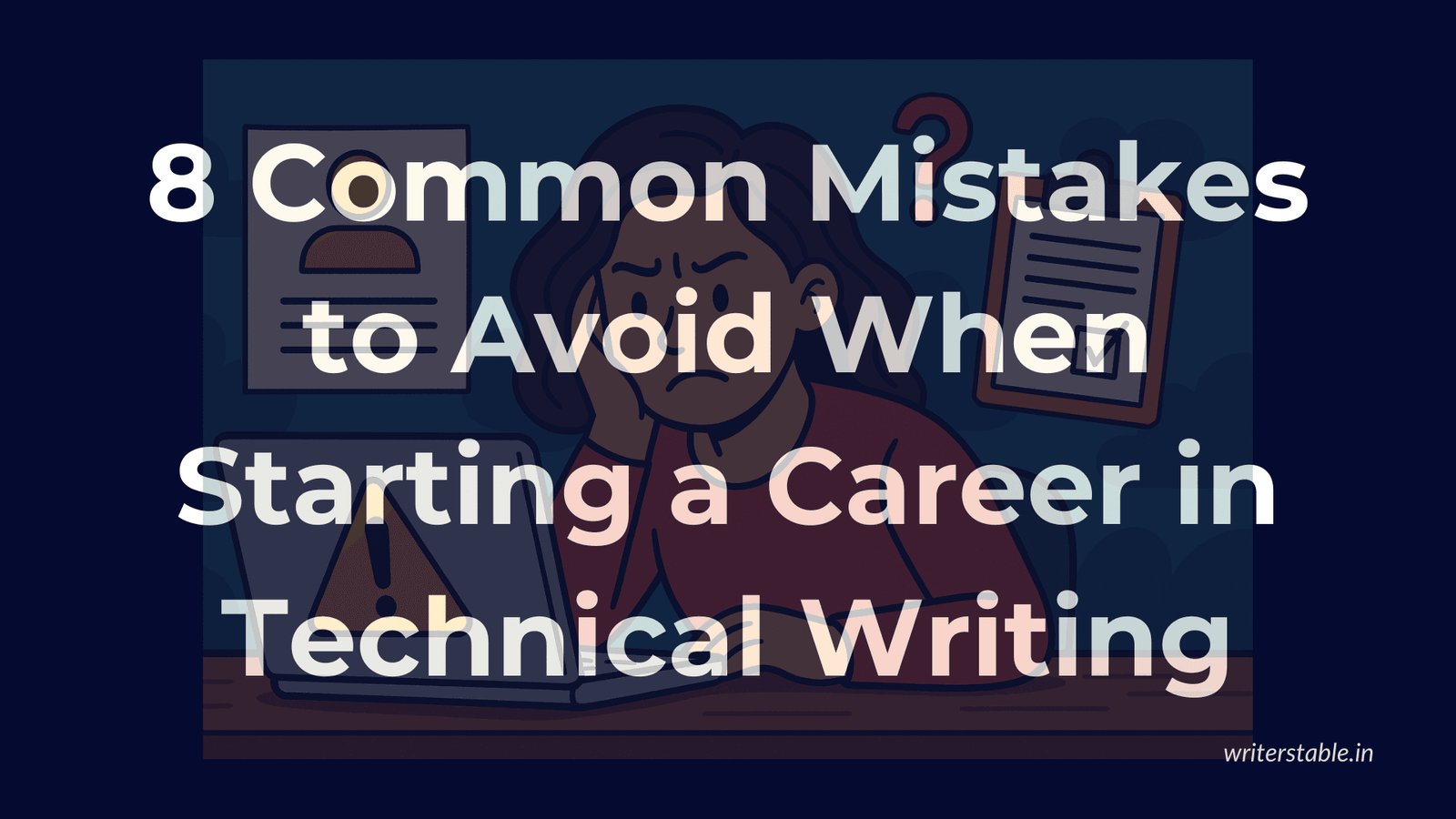Entering the world of technical writing can be both exciting and overwhelming. Whether you’re writing user manuals, how-to guides, or software documentation, it’s essential to avoid common rookie mistakes that can hinder your progress and affect the quality of your work. Here’s a guide to some of the most frequent rookie mistakes and how to avoid them.
Table of Contents
1. Neglecting the Target Audience
One of the most common rookie mistakes is forgetting who will read your content. As a technical writer, your primary job is to make complex information accessible; the first step is understanding your audience’s needs, knowledge level, and goals. This isn’t necessarily a rookie mistake. Even experienced technical writers can develop tunnel vision and overlook audience analysis and intent.
- Mistake: Writing with too much technical jargon or oversimplifying content.
- Solution: Tailor your content based on your audience. For example, documentation for developers should include more technical detail, while user guides for non-experts should focus on simplicity and clarity. Consider creating user personas for your target audience to better understand their needs.
2. Failing to Plan and Organize Your Work
Rushing into writing without a plan can lead to scattered, disorganized content. A well-structured document can significantly enhance readability and effectiveness. Technical documents, especially larger ones like manuals or help guides, require a clear structure to ensure readability and consistency.
- Mistake: Writing without a clear outline or structure.
- Solution: Before you start writing, create an outline or framework for the document. Identify sections, headings, and subheadings to help guide the flow of your content. This ensures that your document is coherent and easy to navigate.
3. Ignoring Consistency in Style and Formatting
Inconsistent style and formatting can confuse readers, making your document difficult to follow. In technical writing, consistency is critical for clarity and professionalism.
- Mistake: Using different formats, fonts, or styles inconsistently throughout the document.
- Solution: Develop a style guide and consistently adhere to it. This includes decisions about headings, subheadings, bullet points, fonts, and terminology. Tools like Grammarly or Hemingway Editor can help maintain consistency in grammar and readability. If your company or client has an existing style guide, always follow that.

4. Not Paying Attention to Visuals
While technical writing often focuses on the written word, visuals are just as important. Diagrams, screenshots, and other images can significantly enhance the clarity of your document and help break up long sections of text.
- Mistake: Failing to use helpful visuals or using poor-quality visuals.
- Solution: When they enhance understanding, include diagrams, charts, and screenshots. Ensure that visuals are high-quality, well-labeled, and strategically placed within the document to effectively support the content.
5. Skipping the Editing and Review Process
New writers sometimes feel that their first draft is good enough and fail to leave time for editing and revision. This can result in errors, unclear instructions, and missed opportunities for improvement.
- Mistake: Submitting the first draft without thorough revision.
- Solution: Always leave time for editing and review. Revisit your content after a break to catch mistakes or areas where clarity could be improved. If possible, have a peer review your work, especially if they are familiar with the content.
6. Overloading the Reader with Information
While it’s important to be thorough, overwhelming your readers with too much information at once can be detrimental. People don’t always need to know everything in one go.
- Mistake: Writing too much at once or overloading content with excessive detail.
- Solution: Break your content into digestible sections, with clear headings and concise explanations. Use bullet points or numbered lists to highlight key information. Consider linking to more detailed explanations instead of fitting everything into a document.

7. Forgetting About Usability and Accessibility
Accessibility compliance is essential to documentation. Your document should be easy to navigate and accessible to people with different needs, such as visual impairments. Elements like image alt-text are geared toward accessibility requirements. As a technical writer, you must be aware of accessibility requirements and ensure that your content complies with them.
- Mistake: Focusing solely on content without considering usability or accessibility.
- Solution: Use clear headings and meaningful alt text for images, and ensure your document is well-organized. If you’re creating digital documents, check for compatibility with screen readers.
8. Not Keeping the Documentation Updated
Technical documentation quickly becomes outdated as products, services, or software evolve. Failing to update your documents regularly can frustrate your readers. This also isn’t so much a rookie mistake as neglectful maintenance.
- Mistake: Not revising documentation after product updates or changes.
- Solution: Review and update your content regularly. Establish a process for tracking changes to products or services and ensure that all relevant documents are updated promptly.
Conclusion
Starting a career in technical writing can be a rewarding experience, but it comes with challenges that require attention to detail, clear communication, and constant improvement. By avoiding these common mistakes and applying best practices, you’ll be on your way to producing high-quality technical content that meets your audience’s needs.
I hope you found this article helpful. If you didn’t, then I would love to hear from you about what I can do to improve it. For more technical writing-related articles and resources, see the Technical Writing page. Also consider following my YouTube channel learntechnicalwriting, Reddit community r/learntechnicalwriting, and Quora space Technical Writer | Technical Writing for more such content.


